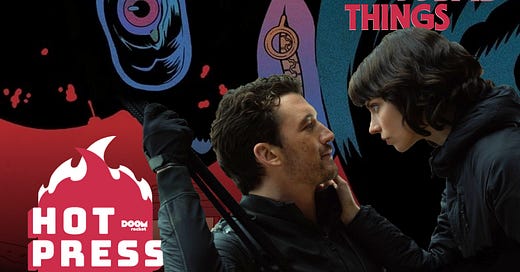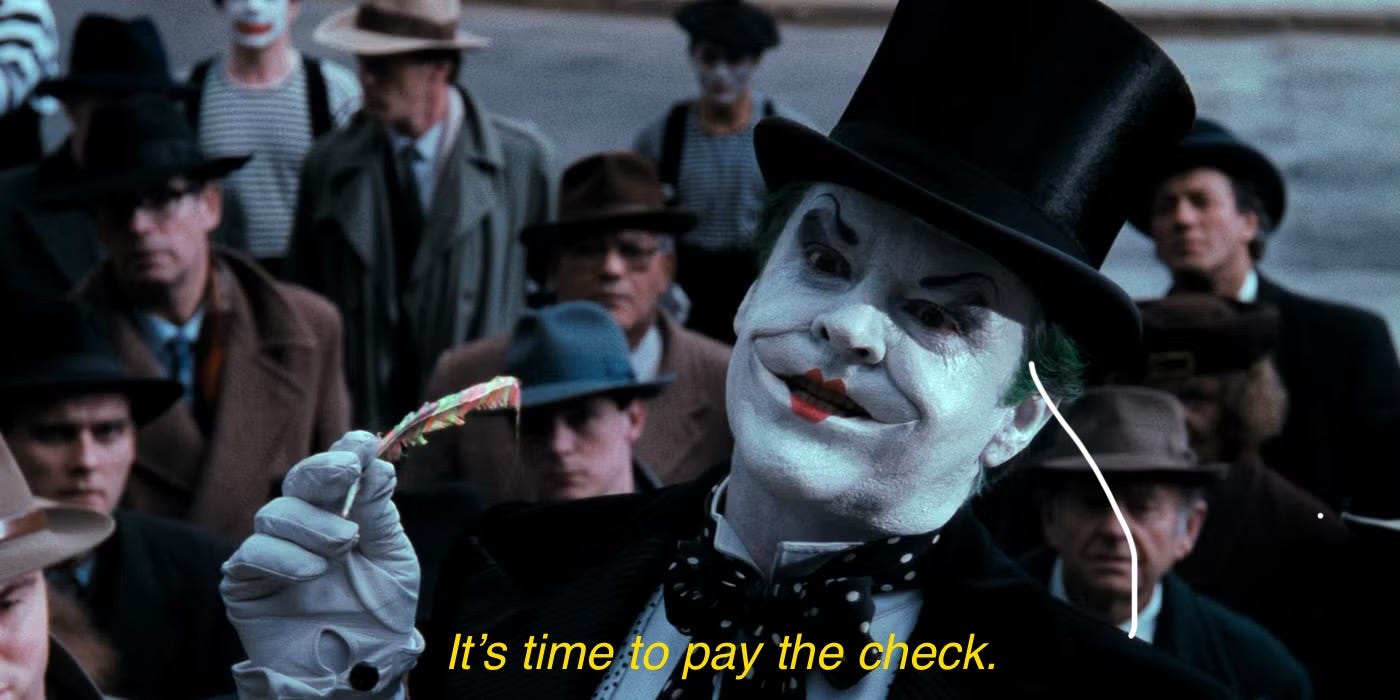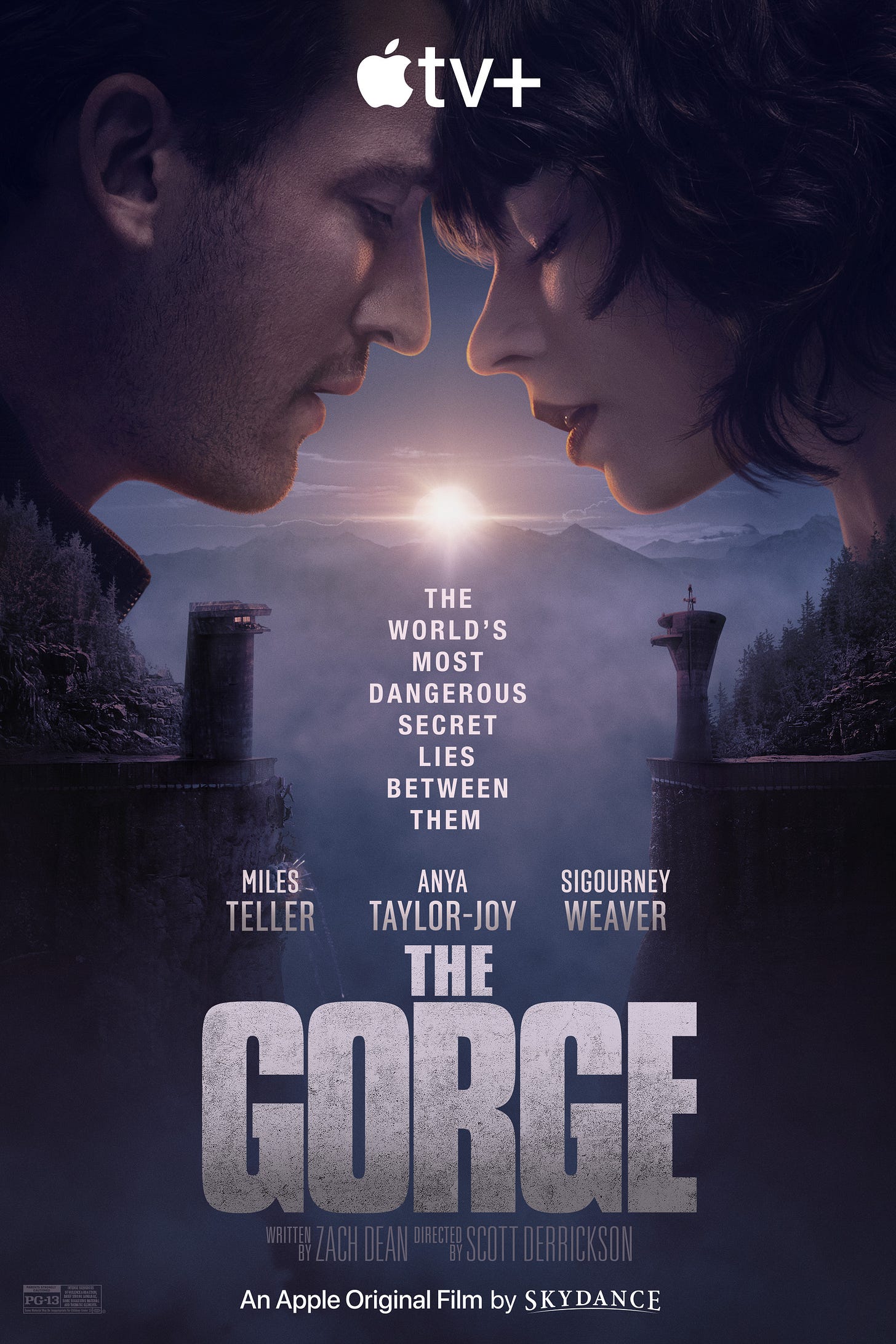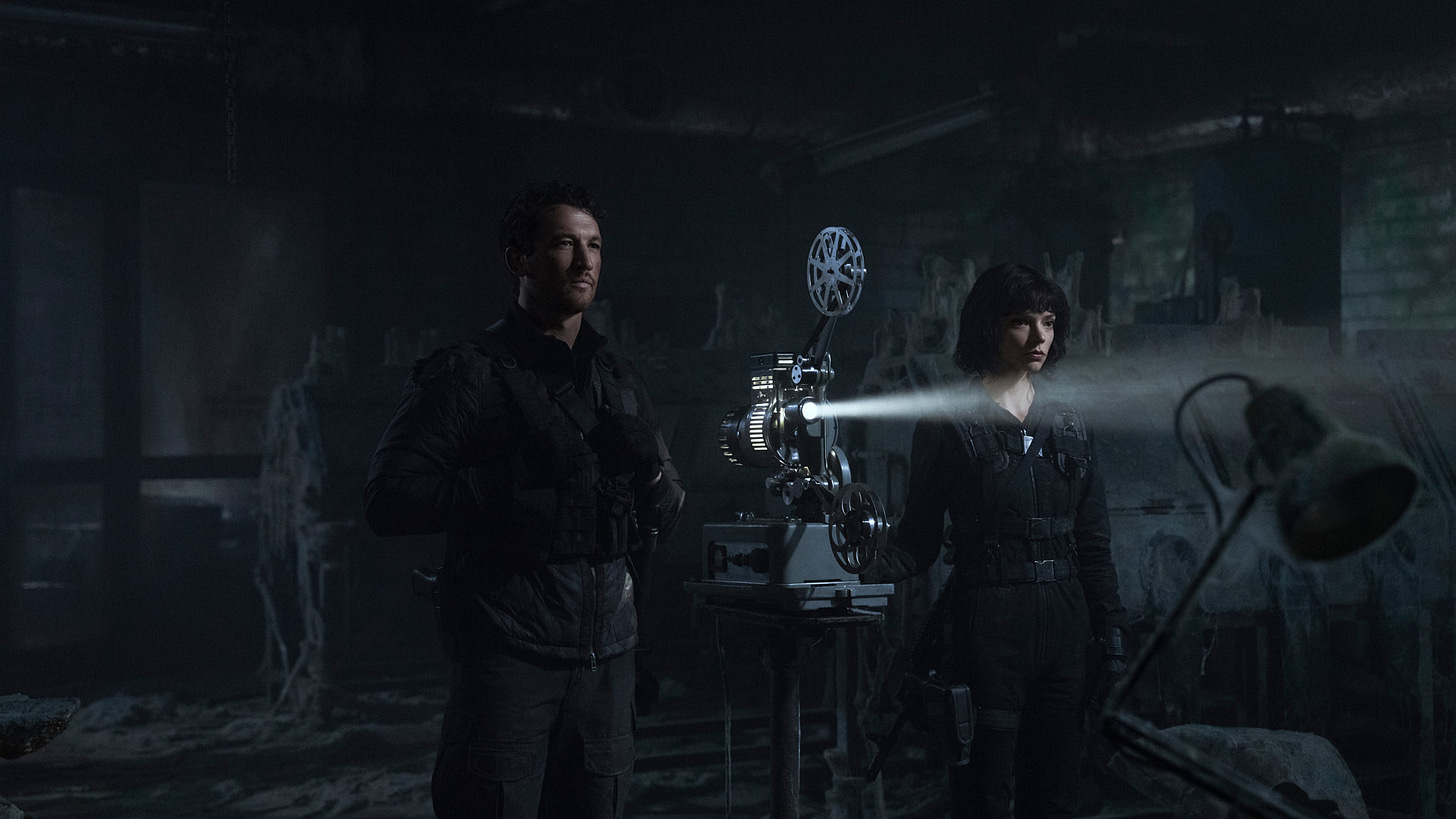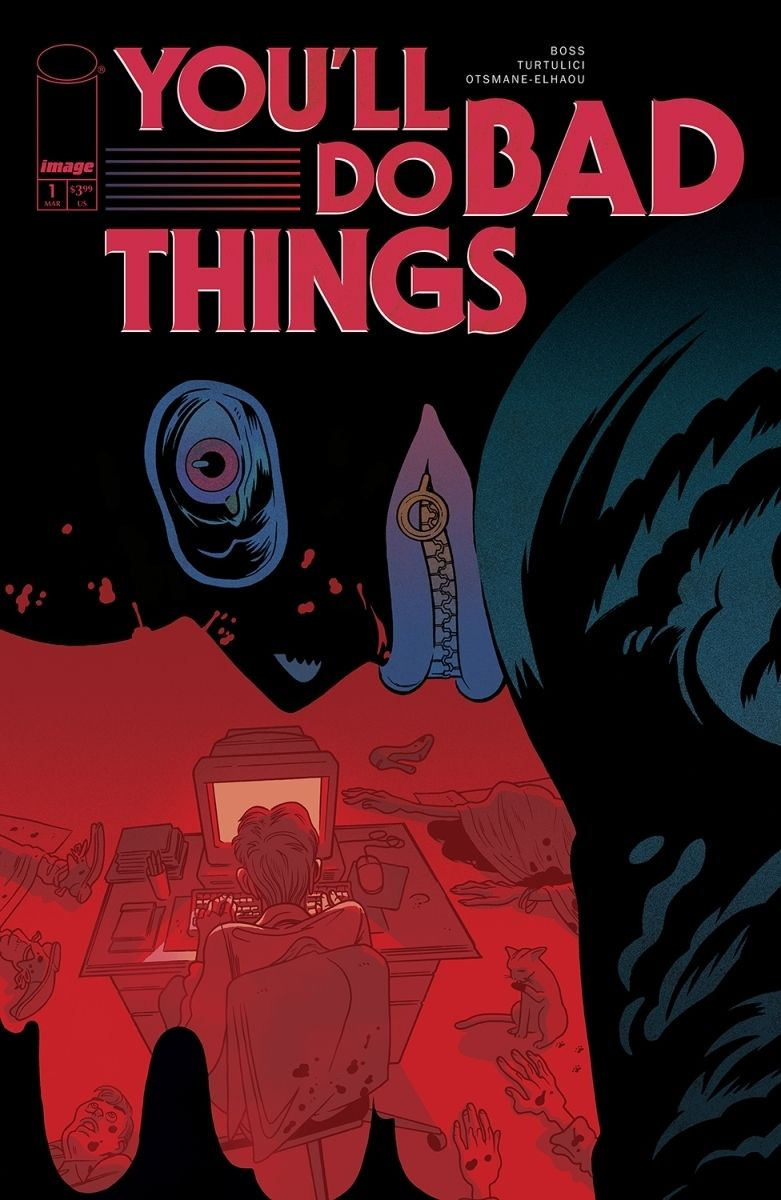HOT PRESS 2/26/25: The Gorge, You'll Do Bad Things
A headline that reads like I'm talking to Scott Derrickson's not-great movie, but isn't.
Braving the gauntlet of tentpole events, off-the-radar releases, and a non-stop avalanche of movies, TV, comics, and other stuff that's bad for you is DoomRocket's HOT PRESS. This week: Scott Derrickson’s The Gorge, Tiny Onion’s You’ll Do Bad Things #1, and some dubious Spawn/Batman love.
I’ve been running behind in a lot of respects due to a fresh turn of bad luck: A sudden bout of severe food poisoning and stunning nerve damage, both of which laid me low this past week. Everything aches. I’ll spare you the gnarly details. 2025 seems to be the year when my body finally said, “Hey! Remember how you spent twenty-odd years treating me like an unregulated entertainment space? Well…”
I have stretched and am finally limber enough for some fresh newslettering. Let’s hop to it.
Naturally, I had some extra time this week and decided to try out The Gorge, an AppleTV+ movie that sure watches like one. Directed by Scott Derrickson (Sinister), we have an unexciting and hopelessly unsexy romantic sci-fi shoot-'em-up about Levi (Miles Teller), a lonely American jarhead who, before falling into a survival horror scenario later on, falls in love with Drasa (Anya Taylor-Joy), his Russian counterpart. Gorge is safe, perfunctory streaming fodder blown up to faintly resemble the generic genre-mushers of a decade ago; think Oblivion cut with Passengers, and you're about there. Works best for folks with a high tolerance for flatly executed flotsam.
So, the story. These two love-stricken sad sacks are tasked by a shady paramilitary outfit with manning twin top-secret outposts overlooking a foggy gorge of forbidding aspect. As hyper-competent soldiers, they're overqualified for the job; as people, they're disposable hard-luck cases with nonexistent social attachments who can keep closely guarded secrets with — uh-oh — their death, which comes at the end of their 356-day rotation. Of course, Levi and Drasa don't know how their contracts will end, but we soon find out. The lure in the padded screenplay by Zach Dean (who, you should note, also wrote The Tomorrow War for Amazon) is that neither they nor we know what's happening down in that gorge. So begins the film's slow (and, cousin, do I mean slow) drip of answers.
Answers eventually arrive, but not before romance is established between Levi and Drasa. For the first half of the film, their growing attraction takes on the cadence of military Garden State, a twee object decked out in slate-grey badassery that involves passing messages to each other (via sniper scopes), playing telescopic chess (which I recall was also a thing in Zack Snyder's Dawn of the Dead remake), and having homemade drumming sessions. (Whiplash reference? Maybe!) For the first hour, The Gorge pours on so much sap that one might choke on the sweetness. When they eventually make that giant leap into each other's arms, the only sparks that fly are the digital ones seen in the movie's by-the-numbers action sequences. You'll find more spice in a bowl of oatmeal.
When these two war-torn loners aren't making doe eyes at each other, they're supposed to be monitoring activity in that gorge below, a smoky hellhole that holds strange wall-crawling humanoids called "Hollow Men" (yes, as in T.S. Eliot; The Gorge has read at least one book). Questions arise, like why didn't someone just nuke the area years ago instead of going to such extreme lengths to contain it? Is this seriously the first time the people manning these outposts broke protocol and contacted each other? The Gorge breezes past all that in its latter half once all the squishy romantic preliminaries are out of the way. If Derrickson was hoping Teller and Taylor-Joy's chemistry would distract us from all the low-effort mystery crap surrounding them, he severely miscalibrated.
Other annoying peculiarities stack up. We're told that the two outposts on either side of the gorge belong to the U.S. and Russia, but instead of digging into tricky geopolitics (such as they are today; when The Gorge was made, the United States and Russia weren't as, um, chummy as they presently are), we're left to project our feelings about this union over the blank slates that are these characters. Also, and this bit made me laugh, Drasa's dad reminds her she's not Russian at all — technically, she's "Lithuanian." The Gorge gently nudges aside any thorny elements that would have made this romance surprising, if not subversive, and eschews any initial adversarial glowering (or even general mistrust!) for a military meet-cute. Yawn.
Later, Levi and Drasa fight monsters. They stumble across a conspiracy you've likely already sussed out by reading this. Teller reads the plot from a computer and is put on exposition duty for the rest of the movie. The monster sieges look like a polished version of that Doom movie from 2005, which starred The Rock. Sigourney Weaver is also in this, and Derrickson has her sitting a desk reading lines for the ten minutes she's in the movie. It's all so painfully dreary that when the happy ending neatly clicks into place, you may long for one of those Hollow Men to burst through the screen just to put you out of your misery.
4 / 10
The Gorge is available to stream on AppleTV+.
Directed by Scott Derrickson.
Written by Zach Dean.
Cinematography by Dan Laustsen.
Starring Miles Teller, Anya Taylor-Joy, and Sigourney Weaver.
Produced by David Ellison, Dana Goldberg, Don Granger, Scott Derrickson, C. Robert Cargill, Sherryl Clark, Zach Dean, Adam Kolbrenner, and Greg Goodman.
Rated PG-13. Contains bloodless hack-’n’-slash, ‘splosions, and some chaste pecking.
You'll Do Bad Things starts as a neon-saturated nighttime mood piece punctuated by desire and rejection. A nice date that ends without a kiss. The woman exits a car, feeling lousy as she shuffles back to her lonely apartment. The view inside is set behind the shades of her closet door as she undresses (De Palma vibes are strong), silently musing about the crummy outcome of her night. (Thought balloons! How I have missed them.) Below, her date idles in the car for some damn reason (he's looking at a photo of himself with a kid, which I'm sure will have some significance later on) when a leering maniac killer pops up in the back seat and turns his chest into a quivering bowl of gazpacho.
There are so many slasher/Giallo touchstones in the first few pages that this series could have just as easily been called You'll Do Pastiche. I'm not complaining. If done well — and, artistically, You'll Do Bad Things is done exceedingly well — I can appreciate pastiche. (Enough, even, to overlook its predictable use of ITC Serif Gothic for that unexciting logo.)
What happened after this kill sequence made me droop in my seat. The whole set-up — vicious, economical, trashy, and so, so much fun — was but a story written by Seth, a sadsack writer pivoting away from his career as a true crime hack to more noble pursuits, like the romantic short story collection he's failing to write. Problem is, every time he gets to the happy ending — the kiss, the reconciliation, the catharsis of love, say — his characters meet the serrated blade of the killer I mentioned. What's happening to Seth's brain isn't mere writer's block; it's a fixation, and somehow, it's bleeding into the real world. How this affects his private life will have to keep for future issues, I'm sad to report — the one hook this debut issue didn't sink into my willing flesh.
The thrills of Tyler Boss and Adriano Turtulici's You'll Do Bad Things #1 are surface-level, but there's enough here to make me mildly anxious to read issue #2. (That will be quite a wait, too, as the debut doesn't drop until late March.) The artwork is another lure. Turtulici's a total find. He's like Leo Romero and Sean Phillips Brundlefly'ed into my new favorite artist. His colors are a blast of jazzy pop art flats, which contrast with his heavy inks like magic. Boss was looking to play with the black-glove moods of Giallo; his collaborator gets him there quite capably, at least in terms of visuals. The rest of the issue is first-act "getting to know you" stuff concerning Seth, his family, and his *checks watch* struggle as a writer — snoozy stuff. The way Turtulici blocks it all out has a charge that imbues Boss' formalities with a pulpy sense of doom.
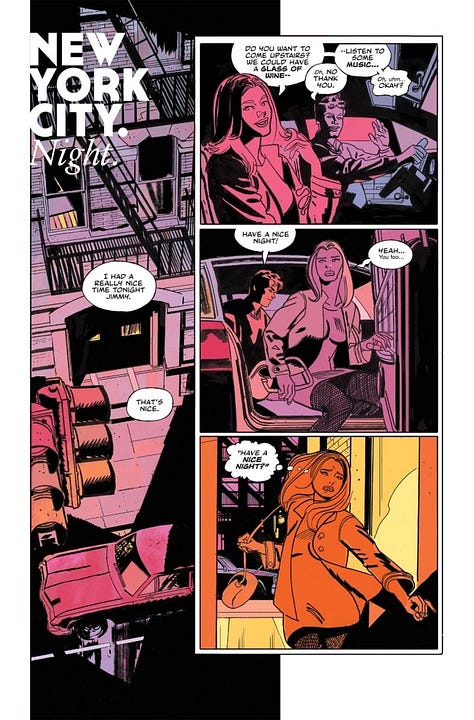
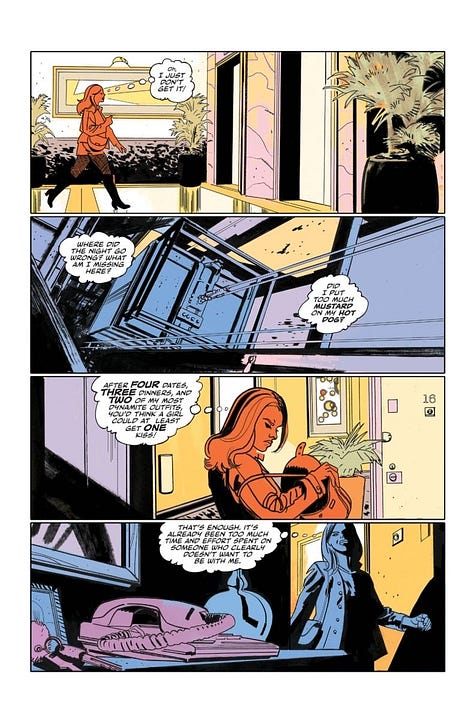
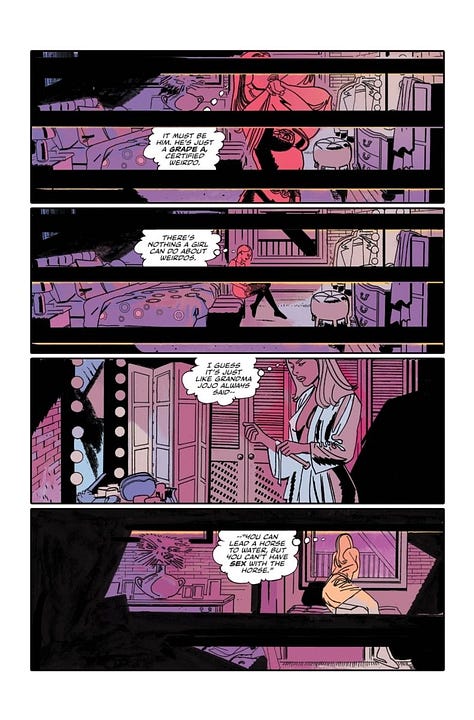
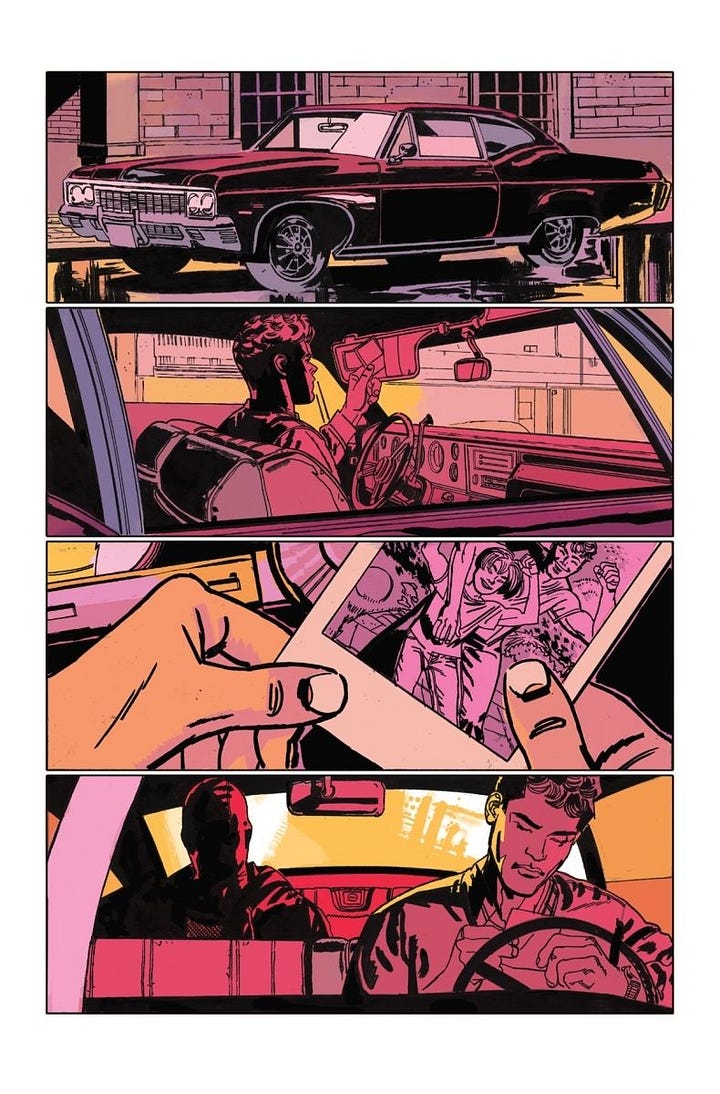
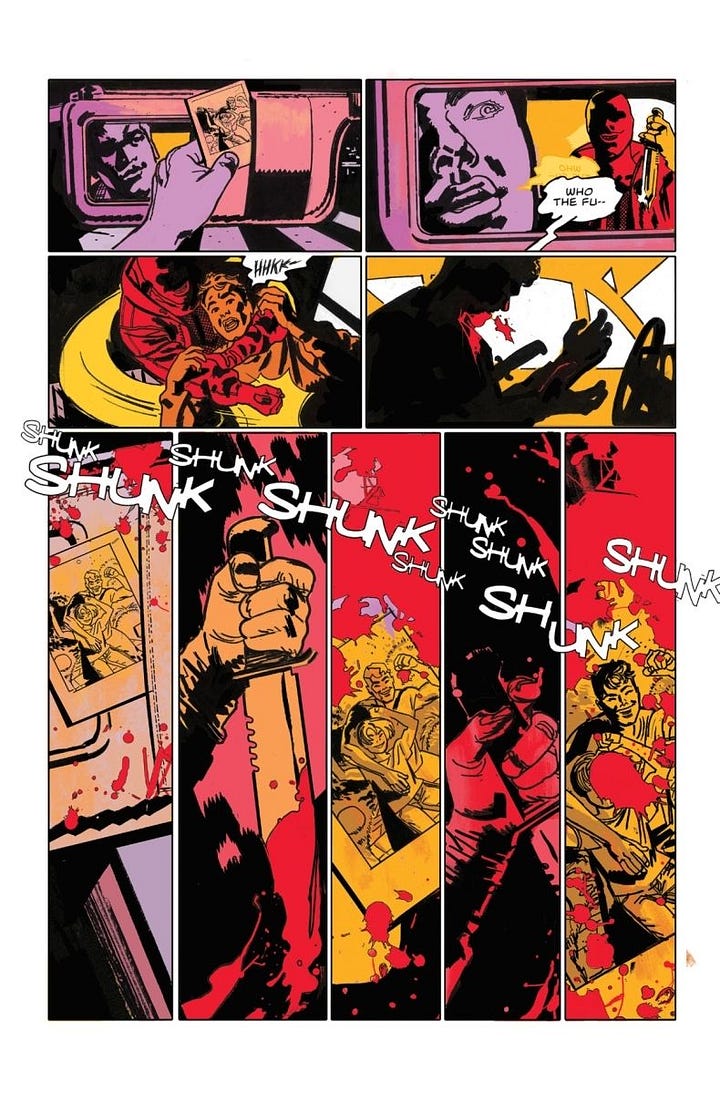
Some hopes for the future. I hope that the zipper-faced killer (who is referred to as "The Shape," which is one horror-nerd nod too many in my book) further materializes in Seth's world in awful, shocking ways that upset the mannered, writerly structure of this issue and sends the whole enterprise careening into a properly gnarly splatter comic (while I don't think wild, sordid schlock is on the docket for us, I can at least dream). I also hope, perhaps in vain, that "The Shape" isn't some manifestation of grief or trauma or guilt on Seth's part for being a true crime profiteer; that's too predictable, and any decent Giallo — even an earnestly considered one like You'll Do Bad Things — succeeds by being anything but.
7 / 10
You’ll Do Bad Things #1 hits comic shops on March 26. To ask your local comic shop for a copy, click this.
Tiny Onion / Image Comics / $3.99
Written by Tyler Boss.
Art by Adriano Turtulici.
Letters by Hassan Otsmane-Elhaou.
Rated M. Contains artfully composed splatter and *shivers* the private agonies of The Writer.
I realize Wizard Magazine isn’t a comic book, but damn if they didn’t know how to commission a killer image. Like most aging elder Millennials, the iconography of my comic reading youth is charted in large part by the cover run of the first 70-odd issues of Wizard, and this one is branded into my memory as one of its coolest — even if it breaks a few of my snooty design rules.
Breaking some rules seemed appropriate when Frank Miller and Todd McFarlane announced the first-ever DC/Image Comics crossover Spawn/Batman for Wizard's April 1994 issue. So all the logo dress is stashed at the bottom — I'll live. But when that kind of design choice is made, the artist (and art director, provided there is one) better make damn sure the rest of the page is maxed out properly; otherwise, the cover looks amateurish and, worse, boring. This is neither.
Maximum impact imagery. The framing is glorious: Busy skyline below, bats arcing on either side of the center figures, a burst of green hellfire for fun, and dawn shades for a boost of color. That ridiculous second moon makes the cover feel like it ought to be painted on the side of a panel van. Capes for days. I'm guessing McFarlane laid out the cover so Miller had as much space as needed to draw Batman and naturally waved bye-bye to Wizard's formatting standards. I'm also guessing that Miller looked at all the real estate Spawn's ginormous cape gave him to play around with and decided to get a bit cape-happy himself. Fun, collaborative stuff. Nice to see Miller rendering Bats mid-Sin City; there's plenty of Dark Knight Returns on display, but there's also a little Dwight in there, too.
The comics that came out of this crossover — the two from DC and Image in 1994 and the dud we got last year — couldn't live up to the energy of this image, but what could? A master and acolyte, mavericks both, going to town all over The Guide to Comics, declaring their continued reign over cape comics loud and clear. A stone-faced advertisement and a mighty flex. How it's done.
That's all I got for this week. Read any good comics lately? See any movies? Drop your new favorites, recommendations, and questions (any at all!) in the comments or The Chat. Or, heck, just shoot me a line: jarrod@doomrocket.com.

